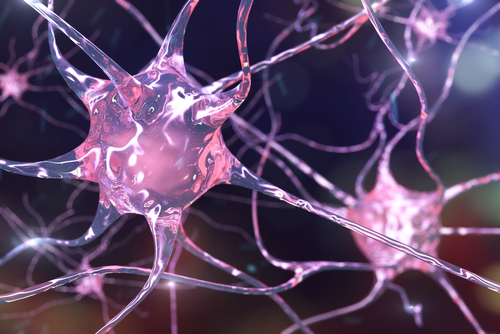Impaired Glial Cell Development Contributes To Huntington’s, Mouse Study Suggests

Dysfunction in the development and maturation of the brain’s primary support cells, know as glial cells, contributes to nerve cell damage in a a mouse model of Huntington’s disease.
“These new findings help pinpoint how the genetic flaw in Huntington’s gives rise to glial cell dysfunction, which impairs the development and role of these cells, and ultimately the survival of neurons,” Steve Goldman, MD, PhD, co-director of the Center for Translational Neuromedicine at the University of Rochester Medical Center and lead author of the study, said in a press release.
The study, “Human ESC-Derived Chimeric Mouse Models of Huntington’s Disease Reveal Cell-Intrinsic Defects in Glial Progenitor Cell Differentiation,” was published in the journal Cell Stem Cell.
Huntington’s disease is a hereditary neurodegenerative disease in which there is a progressive breakdown of neurons, or nerve cells. More recently, the direct involvement of certain types of brain cells in disease development is being explored.
Glial cells include oligodendrocytes — a type of cell that produces myelin, an insulating substance that mediates communication between nerve cells — and astrocytes, cells that support the function of neurons and maintain the chemical balance that allows nerve cells to communicate.
Studies have shown that introducing healthy human glial cells in mice with Huntington’s disease helped keep these animals neurons’ healthy and increased their life span. Another study showed that impaired metabolism in astrocytes — the most abundant type of glial cells in the brain — plays an important role in disease progression.
Now, collaborative research between scientists from the University of Copenhagen, Denmark and New York’s University of Rochester sheds light on the effect of the mutant huntingtin gene (mHTT) in brain cell development and how it contributes to Huntington’s.
Using a technique called RNA sequencing, researchers evaluated gene expression in human embryonic stem cells (hESCs) derived from embryos that carried the mutant huntingtin gene, along with normal controls. Gene expression is the process by which information in a gene is synthesized to create a working product, such as a protein.
The team was then able to reprogram these cells to become glial progenitors — cells that differentiate into other cells upon receiving the correct signals.
Researchers found that in mutant glial progenitor cells, several genes that code for proteins, called transcriptor factors, were expressed at lower levels. These proteins tell the glial precursors to become oligodendrocytes and astrocytes.
Furthermore, when human glial progenitor cells carrying the mHTT mutation were transplanted into the brains of mice with Huntington’s disease, fewer oligodendrocytes and astrocytes were made, myelin synthesis was reduced, and neurons were structurally impaired.
However, when mutant glial cell progenitors were made to express these lacking transcription factors, using a viral vector that carried the correct genes into cells, it restored myelination in animals’ brains. This suggests that viral vectors (such as those used in gene therapy) or gene editing techniques such as CRISPR could be a potential approach for correcting mHTT defects.
“While it has long been known that neuronal loss is responsible for the progressive behavioral, cognitive, and motor deterioration of the disease, these findings suggest that it’s glial dysfunction which is actually driving much of this process,” Goldman said.






